Zone
Crash of a Douglas DC-3C-S1C3G in Unalaska: 2 killed
Date & Time:
Jan 23, 2001 at 2135 LT
Registration:
N19454
Survivors:
No
Schedule:
Unalaska - Anchorage
MSN:
25309
YOM:
1944
Crew on board:
2
Crew fatalities:
Pax on board:
0
Pax fatalities:
Other fatalities:
Total fatalities:
2
Aircraft flight hours:
55877
Circumstances:
A Douglas DC-3 airplane departed an island runway during dark night, VFR conditions without filing a flight plan. The airplane collided with a volcanic mountain at 1,500 feet msl on the runway heading, 4.5 miles from the airport. Earlier in the day, the airplane arrived from Anchorage, Alaska, without a flight plan, having flown along the Alaska Peninsula when VFR flight was not recommended. The crew of the airplane initially planned to remain overnight on the peninsula, but the captain received a request to transport cargo to Anchorage. The airplane was loaded with cargo and fuel, and departed. The crew did not file a flight plan. The end of the departure runway is positioned at the edge of an ocean bay. Beyond the end of the runway, open water and rising volcanic island terrain are present. In the area of intended flight, no illumination of the terrain, or any ground based lighting was present. An obstacle departure procedure for the departure runway recommends a right turn at 2 DME from the runway heading, and then a climb to 7,000 feet. Forty-five minutes after departure, a fire was spotted on the side of a volcano cone, and an ELT signal was detected in the area. No company flight following procedures were found for the accident flight, and the airplane was not reported overdue until the following day. The day after the accident, the airplane wreckage was located on steep, snow-covered terrain. Due to high winds and blowing snow, a rescue team could not get to the accident site until three days after the crash. The captain was the president, the director of operations, and the sole corporate entity of the company. No current maintenance records, flight logs, or pilot logs were located for the company. In the past, the captain's pilot certificate was suspended for 45 days following an accident in a DC-3 airplane when he ran out of gas. Also, the captain's medical certificate had previously been considered for denial after serving 49 months in federal prison for cocaine distribution, but after review, the FAA issued the captain a first class medical. FAA medical records for the captain do not contain any record of monitoring for substance abuse. The first officer's medical had also been considered for denial after an episode of a loss of consciousness. After a lengthy review and an appeal to the NTSB, the FAA issued the first officer a second-class medical. The first officer was part of the flight crew when the captain ran out of gas, and she had two previous aviation accidents. A toxicological examination of the captain, conducted by the FAA, found cocaine and metabolites of cocaine. A toxicological examination of the first officer found two different prescription antidepressant drugs. The FAA prohibits narcotic and mood-altering drug use by pilots.
Probable cause:
The airplane flightcrew's failure to maintain adequate distance/altitude from mountainous terrain during a departure climb to cruise flight, and the captain's impairment from drugs. Factors in the accident were dark night conditions, and the first officer's impairment from drugs.
Final Report:
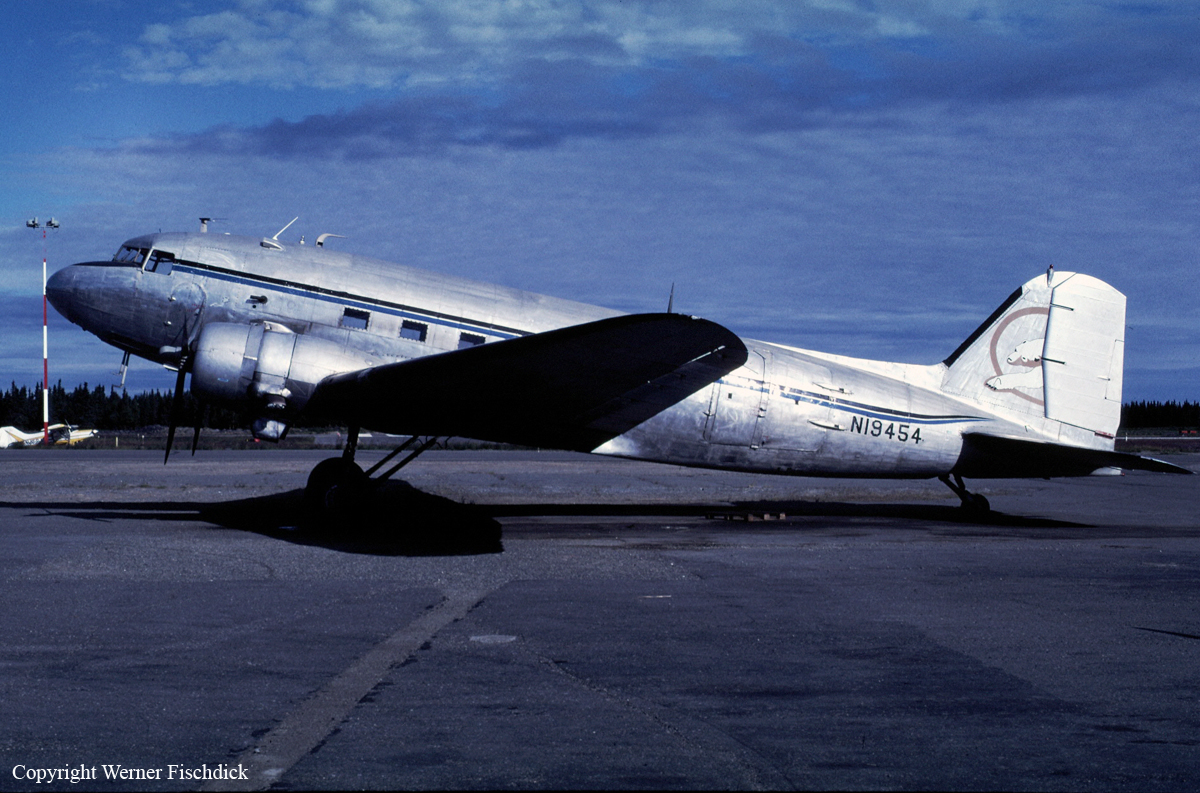
Ground collision of an Ilyushin II-62M in Anchorage
Date & Time:
Nov 11, 1998 at 0133 LT
Registration:
RA-86564
Survivors:
Yes
Schedule:
Anchorage - San Francisco
MSN:
4934734
YOM:
1979
Crew on board:
12
Crew fatalities:
Pax on board:
0
Pax fatalities:
Other fatalities:
Total fatalities:
0
Circumstances:
The Ilyushin II-62M was parked at gate with its 12 crew members on board, awaiting the passengers for the next leg to San Francisco. An Asiana Boeing 747-400 (HL7414) was taxiing to gate N6 for a refueling stop on the flight Seoul - New York (flight 211). While trying to make a U-turn, the Boeing's n°1 engine struck the wing of the Ilyushin. Then the left winglet struck the base of the Ilyushin's tail. The Asiana crew added more power causing the wing to cut through nearly half of the tail of the Russian aircraft. The maximum ground speed recorded by the on-board recorders was 16 knots, while according to the company flight manual it should have been "10 knots or below (5 knots if wet or slippery)".
Probable cause:
The excessive taxi speed by the pilot of the other aircraft. A factor associated with the accident was the other pilot's inadequate maneuver to avoid the parked airplane.
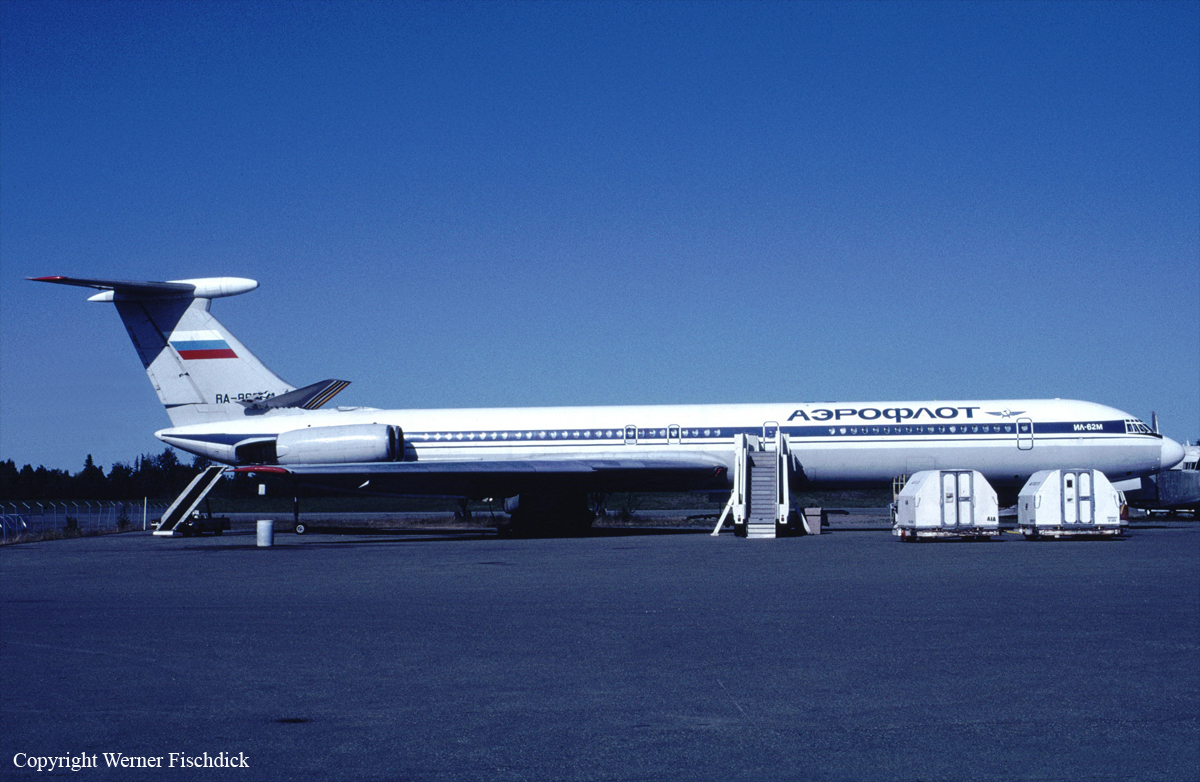
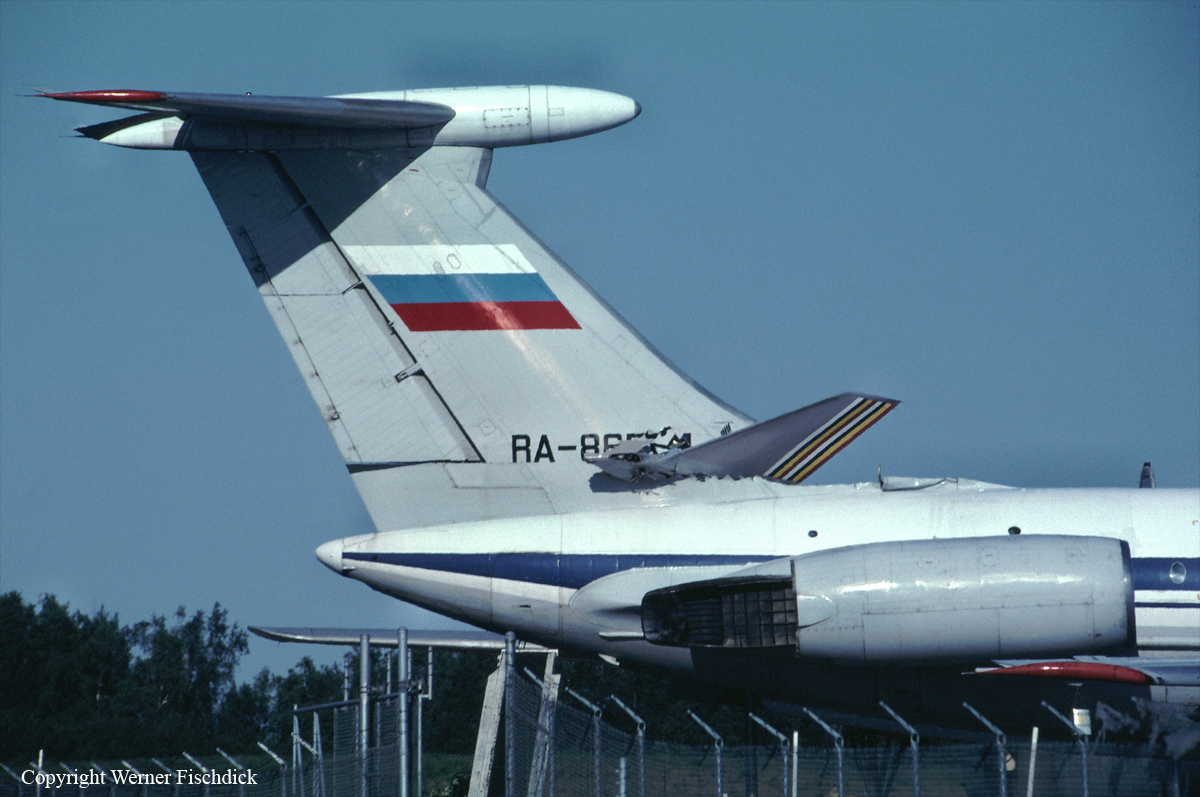
Crash of a Piper PA-31-350 Navajo Chieftain off Homer
Date & Time:
Sep 7, 1998 at 1513 LT
Registration:
N4072A
Survivors:
Yes
Schedule:
Homer - Anchorage
MSN:
31-8152016
YOM:
1981
Crew on board:
1
Crew fatalities:
Pax on board:
0
Pax fatalities:
Other fatalities:
Total fatalities:
0
Captain / Total hours on type:
2000.00
Aircraft flight hours:
4133
Circumstances:
The pilot departed from an intersection 2,100 feet from the approach end of the 6,700 feet long runway. Immediately after takeoff the right engine failed. The pilot told the NTSB investigator-in-charge that he feathered the right propeller, and began a wide right turn away from terrain in an attempt to return to the airport. He stated the airspeed did not reach 90 knots, the airspeed and altitude slowly decayed, and the airplane was ditched into smooth water. After recovery, the cowl flaps were found in the 50% open position. No anomalies were found with the fuel system. The airplane departed with full fuel tanks, at a takeoff weight estimated at 6,606 pounds. The right engine was disassembled and no mechanical anomalies were noted. The best single engine rate of climb airspeed is 106 knots, based on cowl flaps closed, and a five degree bank into the operating engine.
Probable cause:
A total loss of power in the right engine for undetermined reasons.
Final Report:
Crash of a Swearingen SA26T Merlin IIB in Saint George: 2 killed
Date & Time:
Jul 7, 1998 at 1547 LT
Registration:
N501FS
Survivors:
No
Schedule:
Anchorage - Saint George
MSN:
T26-146
YOM:
1969
Crew on board:
2
Crew fatalities:
Pax on board:
0
Pax fatalities:
Other fatalities:
Total fatalities:
2
Captain / Total hours on type:
250.00
Aircraft flight hours:
7799
Circumstances:
The flight departed Anchorage, Alaska, and was en route to Saint George, Alaska, to pick up passengers for a return flight to Anchorage. The pilot-in-command (PIC) was seated in the right seat, and the copilot was seated in the left seat. This was the copilot's third flight in this make and model airplane, and he was not qualified as a crewman in it under 14 CFR Part 135. There was no record of when the copilot last performed a non directional beacon (NDB) approach. The NDB indicator in the cockpit was on the left side of the left control column, partially blocked from the view of the PIC. The minimum altitude for the segment of the approach prior to the final approach fix (FAF) was 1,700 feet. The Minimum Descent Altitude (MDA) for the final segment of the approach was 880 feet. The reported ceiling was 100 feet overcast. The Air Route Traffic Control Center radar altitude readout for the airplane revealed that the airplane descended below 600 feet prior to reaching the FAF. The radar ground track revealed the airplane on course prior to the course reversal procedure turn on the published approach. The radar ground track showed that after the course reversal, the airplane continued through the published final approach course, and turned to parallel the inbound track three miles north of course. The radar plot terminates about the location of the 550 feet high cliffs where the airplane was located. Weather at the time of the accident was reported as 100 foot overcast. This location was 5.5 miles (DME) from the airport. A review of radar tapes from the day prior to the accident, show the same airplane and PIC tracking the published course outbound and inbound, and descending below the published approach minima to below 500 feet. This flight successfully landed at the airport. An interview with the copilot from the successful flight revealed that the PIC intentionally descended to 300 feet on the approach until he acquired visual contact with the ocean, then flew to the airport to land. An aircraft flying on the published inbound final approach course at 5.5 DME is over water, approximately three miles from the nearest terrain.
Probable cause:
The pilot-in-command's failure to adequately monitor the instrument approach and the copilot's failure to intercept and maintain the proper NDB bearing on the approach. Contributing factors were the pilot-in-command's obstructed view of the NDB indicator and his overconfidence in his personal ability, the terrain (cliffs), low ceiling, and the flight crew's disregard of the minimum descent altitude.
Final Report:
Crash of a Douglas C-47A-90-DL in Point McKenzie
Date & Time:
May 24, 1998 at 0024 LT
Registration:
N67588
Survivors:
Yes
Schedule:
Unalakleet - Anchorage
MSN:
20536
YOM:
1944
Crew on board:
2
Crew fatalities:
Pax on board:
1
Pax fatalities:
Other fatalities:
Total fatalities:
0
Captain / Total hours on type:
7000.00
Aircraft flight hours:
34232
Circumstances:
The captain/operator, the first officer and one passenger, departed on a cross-country positioning flight. The airplane contained about 300 gallons of fuel. After 3.9 hours en route, the flight was cleared for a visual approach to the destination airport. During the approach, both engines lost power about 2,000 feet mean sea level. The pilot stated the right fuel tank was empty. He estimated that 50 to 60 gallons of fuel remained in the left fuel tank. While the airplane was descending toward an area of open water, he attempted to restart the engines without success. He then lowered the landing gear, and made a right turn toward a small airstrip, located about 5 miles northwest of the destination airport. The airplane touched down in an area of soft, marsh covered, terrain. During the landing roll, the airplane nosed down and received damage to the forward, lower portion of the fuselage. An inspection of the airplane by an FAA inspector revealed the left fuel tank contained about 1 inch of fuel. The right fuel selector was positioned on the right auxiliary fuel tank. The left fuel selector was positioned between the left main, and the left auxiliary fuel tanks.
Probable cause:
The pilot's inadequate in-flight planning/decision which resulted in fuel exhaustion and subsequent loss of engine power. A related factor was the soft, marshy terrain at the forced landing area.
Final Report:
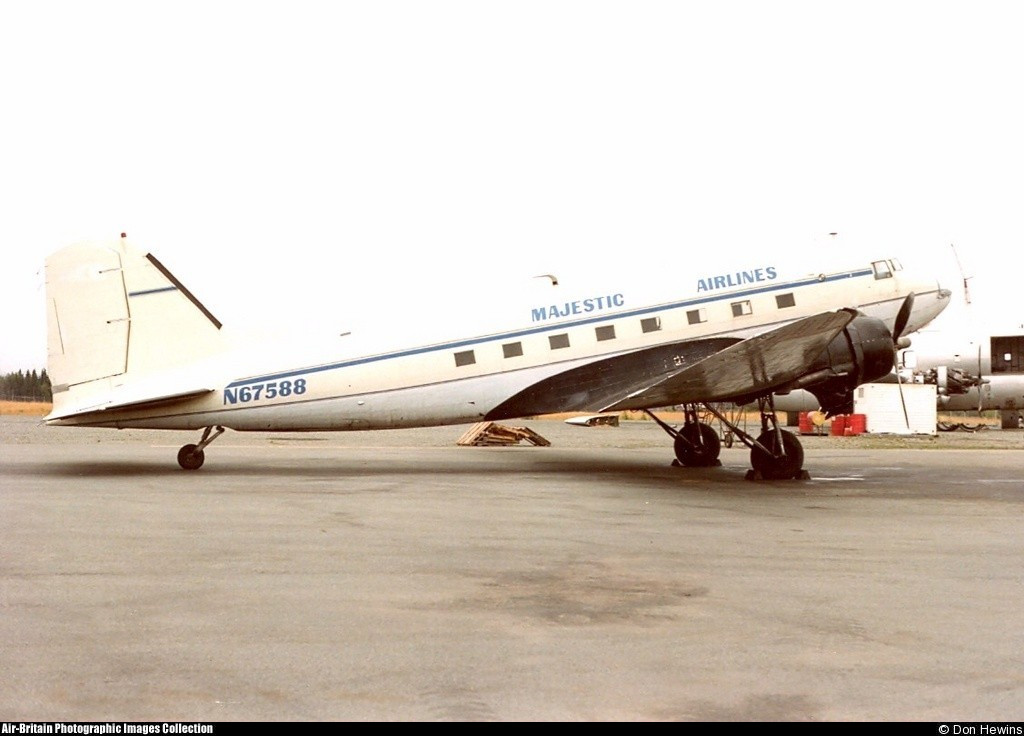

Crash of a McDonnell Douglas MD-11F in Newark
Date & Time:
Jul 31, 1997 at 0131 LT
Registration:
N611FE
Survivors:
Yes
Schedule:
Singapore – Penang – Taipei – Anchorage – Newark
MSN:
48604
YOM:
1993
Flight number:
FDX014
Crew on board:
3
Crew fatalities:
Pax on board:
2
Pax fatalities:
Other fatalities:
Total fatalities:
0
Captain / Total hours on type:
1253.00
Copilot / Total hours on type:
95
Aircraft flight hours:
13034
Aircraft flight cycles:
2950
Circumstances:
The aircraft crashed while landing on runway 22R at Newark International Airport (EWR), Newark, New Jersey. The regularly scheduled cargo flight originated in Singapore on July 30 with intermediate stops in Penang, Malaysia; Taipei, Taiwan; and Anchorage, Alaska. The flight from Anchorage International Airport (ANC), Anchorage, Alaska, to EWR was conducted on an instrument flight rules flight plan and operated under provisions of 14 Code of Federal Regulations (CFR) Part 121. On board were the captain and first officer, who had taken over the flight in Anchorage for the final leg to EWR, one jumpseat passenger, and two cabin passengers. All five occupants received minor injuries in the crash and during subsequent egress through a cockpit window. The airplane was destroyed by impact and a post crash fire. According to flight plan and release documents, the airplane was dispatched to ANC with the No. 1 (left engine) thrust reverser inoperative. The flight plan time from ANC to EWR was 5 hours and 51 minutes—47 minutes shorter than the scheduled time of 6 hours and 38 minutes because of 45-knot tailwinds en route. The flight crew stated that at flight level (FL) 330 (about 33,000 feet mean sea level [msl]), the flight from ANC to EWR was routine and uneventful. At 0102:11, a Federal Aviation Administration (FAA) Boston Air Route Traffic Control Center air traffic controller instructed flight 14 to descend and maintain FL180, according to the airplane’s cockpit voice recorder (CVR). About 0103, the captain and first officer discussed the approach and landing to runway 22R and the airplane’s landing performance. Using the airport performance laptop computer (APLC), the first officer determined that the airplane’s runway stopping distance would be approximately 6,080 feet using medium (MED) autobrakes. According to the CVR, at 0103:33, the flight crew then compared the APLC approximate landing distance for MED braking (6,080 feet) to the after-glideslope touchdown distance (6,860 feet) provided on the instrument approach plate. Based on the flight crew's calculation (6,860 – 6,080), MED braking provided a 780-foot margin after stopping. The flight crew then compared the APLC approximate landing distance for maximum (MAX) braking (5,030 feet) to the same 6,860-foot after-glideslope touchdown distance provided on the instrument approach plate. Based on the flight crew's calculation (6,860 – 5,030), MAX braking provided a 1,830-foot margin after stopping. On the basis of these calculations, the first officer suggested using MAX autobrakes. The captain agreed, stating “we got a lot of stuff going against us here so we’ll…start with max.” The first officer added, “I mean…I mean if we don’t have the reverser.” At 0114:22, the captain asked the first officer to advise the passengers that “we’re gonna have a pretty abrupt stop because of those brakes and the thrust reversers and all that stuff.” Twice during the approach, the captain asked the first officer to remind him to only use the No. 2 and No. 3 thrust reversers. At 0116:16, the captain noted that the left landing light was inoperative, adding “… just the right’s working.” The EWR tower controller cleared flight 14 to land at 0129:45 and advised the flight crew “winds two five zero at five.” At 0130:02, the first officer stated “max brakes” during the before-landing checklist. The captain replied “max brakes will be fine,” and the first officer responded “if they work.” At 0130:34, the captain stated “[landing gear] down in four green” and called for “flaps fifty.” At 0130:45, the captain disengaged the autopilot at an altitude of 1,200 feet during the approach and “hand flew” the airplane to touchdown. The autothrottles were engaged, as recommended by McDonnell Douglas and FedEx procedures. According to information from the airplane’s flight data recorder (FDR), the approach was flown on the glideslope and localizer until touchdown, and the airplane’s approach airspeed was about 158 knots until the flare. According to the CVR, the pilots had selected an approach reference speed of 157 knots, or Vref plus 5 knots. Altitude callouts were made by the on board central aural warning system (CAWS) at 1,000 feet and 500 feet, and the first officer called out minimums (211 feet) at 0132:03. At 0132:09, the first officer stated “brakes on max,” and CAWS callouts followed for 100, 50, 40, 30, 20, and 10 feet until the sound of initial touchdown at 0132:18.75. One-half second later, the CVR recorded an expletive by the captain. At 0132:20.26, the CVR recorded increasing high-frequency tones consistent with engine spool-up (accelerating engine rpms), and at 0132:21.06, the CVR recorded a decrease in high-frequency tones consistent with engine spool-down. The sound of a “loud thump” consistent with another touchdown was recorded at 0132:21.62. A series of expletives by the captain and first officer followed until sounds of “metallic breakup” were recorded at 0132:27. FDR data indicated that after the airplane’s initial touchdown, it became airborne and rolled to the right as it touched down again (see section 1.1.1 for a detailed description of the airplane’s performance during the landing sequence). The airplane continued to roll as it slid down the runway, coming to rest inverted about 5,126 feet beyond the runway threshold and about 580 feet to the right of the runway centerline. The accident occurred during the hours of darkness. Visual meteorological conditions prevailed at the time of the accident.
Probable cause:
The captain’s overcontrol of the airplane during the landing and his failure to execute a go-around from a destabilized flare. Contributing to the accident was the captain’s concern with touching down early to ensure adequate stopping distance.
Final Report:



Crash of a De Havilland DHC-4A Caribou in New Stuyahok
Date & Time:
Aug 2, 1996 at 1100 LT
Registration:
N800NC
Survivors:
Yes
Schedule:
Anchorage - New Stuyahok
MSN:
98
YOM:
1963
Crew on board:
2
Crew fatalities:
Pax on board:
0
Pax fatalities:
Other fatalities:
Total fatalities:
0
Captain / Total hours on type:
850.00
Aircraft flight hours:
14638
Circumstances:
The airplane's nose gear collapsed during a landing roll on a gravel airstrip. Subsequent examination of the nose gear locking mechanism disclosed a failed hydraulic drag strut locking actuator.
Probable cause:
The collapse of the nose gear precipitated by the failure of the hydraulic nose gear drag strut locking actuator.
Final Report:

Crash of a Boeing 747-2R7F near Wanli: 5 killed
Date & Time:
Dec 29, 1991 at 1505 LT
Registration:
B-198
Survivors:
No
Schedule:
Taipei - Anchorage
MSN:
22390
YOM:
1980
Flight number:
CI358
Crew on board:
5
Crew fatalities:
Pax on board:
0
Pax fatalities:
Other fatalities:
Total fatalities:
5
Aircraft flight hours:
45868
Aircraft flight cycles:
9094
Circumstances:
Four minutes after takeoff from Taipei-Chiang Kai Shek Airport, while climbing to an altitude of 5,000 feet, the crew contacted ATC and declared an emergency after the engine n°3 separated from the right wing. The crew was instructed first to maintain FL050 and to initiate a left turn but the captain replied this was not possible so he was eventually cleared to turn to the right. Two minutes later, the aircraft entered an uncontrolled descent and crashed on the slope of Mt Wuzu located near Wanli, about 20 km northeast of Taipei. The aircraft disintegrated on impact and all five crew members were killed. The accident occurred six minutes after takeoff.
Probable cause:
It was determined that the engine n°3 detached during initial climb following the rupture of its pylon due to the presence of fatigue cracks. After the engine n°3 detached, it struck the engine n°4 that separated as well. In such conditions, the crew was unable to maintain a safe control of the aircraft. Last A-check maintenance programme was completed last December 21. It was also reported that a misunderstanding occurred between pilots and ATC who misunderstood which engine was lost, thinking that the emergency situation was reporting to a loss of engine n°2.
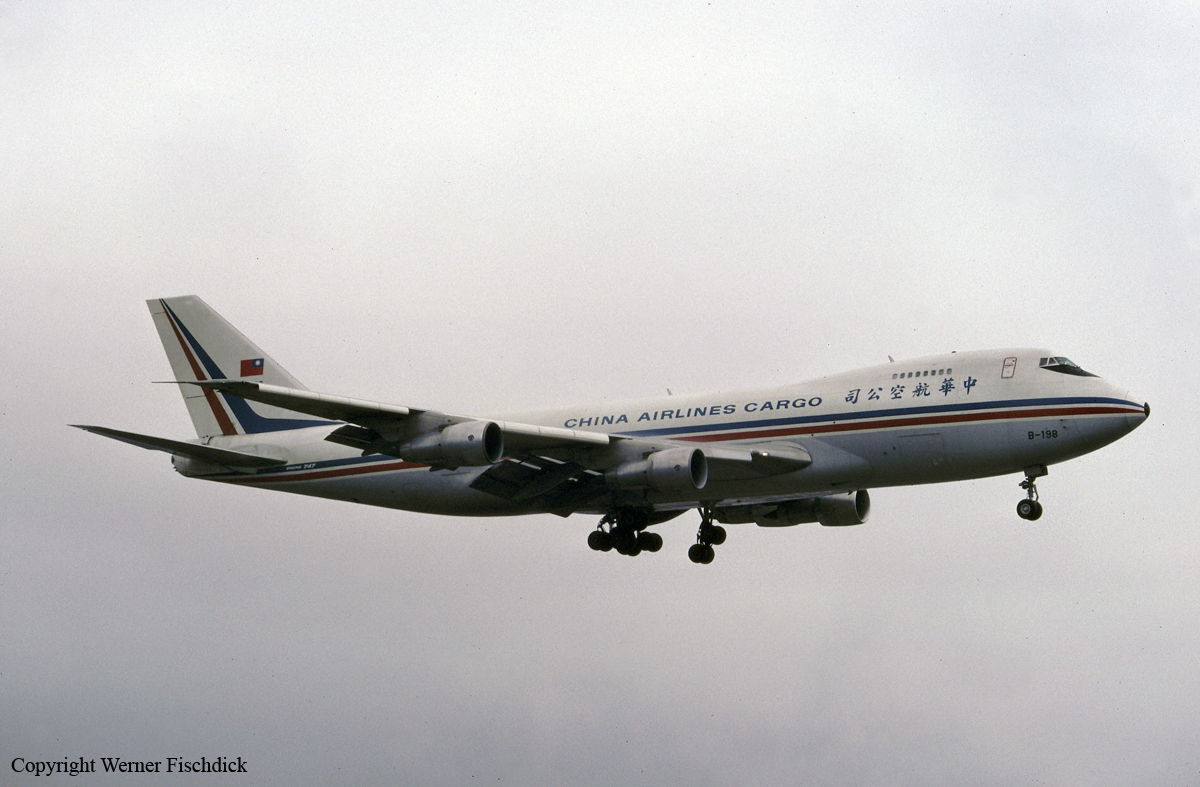
Crash of a Cessna 414 Chancellor in Sitka: 2 killed
Date & Time:
Aug 28, 1990 at 1216 LT
Registration:
N8180K
Survivors:
No
Schedule:
Sitka – Anchorage
MSN:
414-0080
YOM:
1970
Crew on board:
1
Crew fatalities:
Pax on board:
1
Pax fatalities:
Other fatalities:
Total fatalities:
2
Aircraft flight hours:
2867
Circumstances:
The pilot received a weather briefing and filed an IFR flight plan from Sitka to Anchorage, Alaska. During takeoff from runway 11 at Sitka, he provided a pirep to the flight service station, saying that he had entered the cloud bases at 700 feet msl. While departing, a left turn was made, and the airplane crashed on Mt Verstovia at the 1420 feet level, approximately 3 miles east of the airport. An on-scene investigation revealed the airplane struck wooded terrain while climbing on a heading of 359°. Several tree limbs had been clean cut (by the propellers); wreckage was spread over a 516 feet area. A standard instrument departure (Sitka 5 sid) was available which would have provided terrain clearance with a right turn-out from runway 11 to an initial climb heading of 280°.
Probable cause:
Improper planning/decision by the pilot, and his failure to follow IFR procedures and maintain clearance from mountainous terrain.
Final Report:





